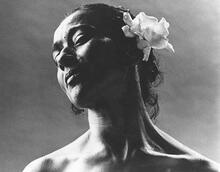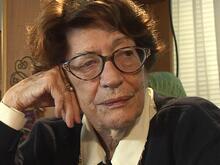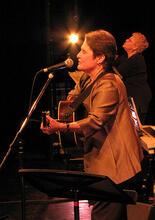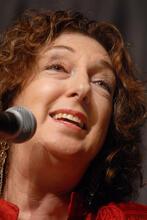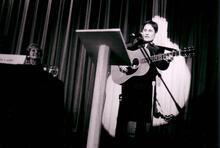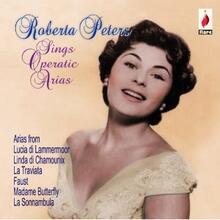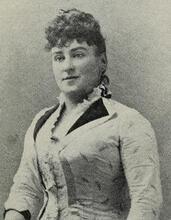Edith Weiss-Mann
Sent to study piano in Berlin at age fifteen, Edith Weiss-Mann was prompted by a fortuitous encounter with musician Wanda Landowska to reorient her attention to the harpsichord, the revival of which she went on to pioneer. In 1925 she helped found The Society for the Revival of Ancient Music in Hamburg; the Society’s chamber ensemble, which she founded, was among the first to revive baroque music in Germany. Forced to emigrate from Germany because she was Jewish, Weiss-Mann settled in New York City in 1939, where she became a preeminent interpreter of baroque music on the harpsichord. Weiss-Mann’s distinguished career as a concert artist, music journalist, and teacher led to universal acknowledgment of her tremendous influence on new music in Germany during the interwar period.
One of the most important of the pioneers in the revival of early music and period musical instruments in the early years of the twentieth and, sadly, one of those pioneers who is least remembered by posterity, the harpsichordist Edith Weiss-Mann was born in Hamburg, Germany, on May 11, 1885.
Family & Music Education
She was the eldest daughter of Hermine and Emil Weiss, who, like his father, was a businessman. The first member of her family to manifest musical talent, Weiss-Mann went to Berlin at the age of fifteen to study piano at the Hochschule für Musik, which was then still under the direction of Joseph Joachim (1831–1907), the legendary concert violinist and student of Mendelssohn-Bartholdy, Schumann, and David. After four years there, she continued her studies privately, working with three important Liszt pupils, James Kwast, Carl Friedberg, and Jose Vianna da Motta. A fortuitous encounter with Wanda Landowska, who was then living and teaching in Berlin, prompted Weiss-Mann to focus her attention on the harpsichord and, with such other early Landowska students as Alice Ehlers and Eta Harich-Schneider, she was in the forefront of the early music revival in Germany in general and the revival of the harpsichord in particular.
In 1910 she returned to Hamburg, where she married the portrait painter Wilhelm Mann (1882–1957). Although the marriage did not prove to be a happy one, the couple parted on amicable terms and made sure that their son, Alfred, who was born in Hamburg on April 28, 1917, did not suffer as a result of his parents’ divorce. Alfred, who inherited his mother’s musical talent, had a long and distinguished career as a recorder player, violist, double bassist, and conductor. One of the foremost Bach and Handel scholars of his era, Dr. Mann prepared modern English and German language editions of the J. J. Fux counterpoint treatise Gradus ad Parnassum which remain the standards throughout the world.
Career as a Concert Artist, Music Journalist, & Teacher
In 1925 Weiss-Mann helped to found the Vereinigung zur Pflege alter Musik (The Society for the Revival of Ancient Music) in Hamburg; working with the eminent musicologist and conductor Fritz Stein, she established the Society’s chamber ensemble, a group that was among the first to champion the revival of baroque music in Germany. Stein was not the only esteemed conductor with whom she performed. She also appeared as a soloist with Otto Klemperer and Wilhelm Furtwängler.
Compelled to emigrate from Germany because she was Jewish, Weiss-Mann settled in New York City in 1939. She quickly joined such artists as Landowska, Yella Pessl, and Ernst Victor-Wolff as a pre-eminent interpreter of Baroque keyboard music on the harpsichord. For example, she was the first to perform all of Bach’s clavier concerti in a single series of concerts.
In addition to a distinguished career as a concert artist, Weiss-Mann enjoyed great renown as a music journalist, first in Germany and then in the United States. She wrote for the Frankfurter Zeitung and the Deutsche Allgemeine Zeitung Berlin and for many years she was the Hamburg correspondent of the New York Music Courier.
Weiss-Mann also taught extensively. Her theory and composition pupils included the composer Ingolf Dahl, and she worked as hard to promote the music of her contemporaries as she did to revive the music of earlier times. To that end, she collaborated with such distinguished composers as Paul Hindemith and Heinrich Kaminski and it is universally acknowledged that she wielded a tremendous, and often decisive, influence on new music in Germany during the years between the two World Wars.
Legacy
Weiss-Mann enjoyed a particularly exalted reputation as a continuo player. In his annotations for her last, posthumously released, recording, Edward Tatnall Canby wrote that “the guiding strength, the perfect taste of her performance of the continuo parts … is no more than those of us who knew her would have expected from a woman whose knowledge, character, and wide-ranging musicianship had made her a leader in this field for almost half a century.”
Weiss-Mann’s reputation as a recitalist was also great. After her long-delayed solo debut in New York on May 9, 1949, The New York Times wrote,
It was good to hear her in a whole program of her own. She is an excellent artist, and after collaborating so self-effacingly with others—often playing only the continuo—she deserved the spotlight. … The way Mme. Weiss-Mann sat at the black and gold harpsichord, her hands moving over the two keyboards as swiftly as dragonflies, one would have thought it easy to play with such accuracy. For she has the assurance that comes from thorough mastery of the instrument. Because of her technical skill, it was easy to lose sight of it in concentrating on the quality of her interpretations. But one couldn’t help admiring the way she achieved subtle variations of color without faltering in the firmness and resilience of her rhythms.
At the time of her death on May 18, 1951, a week after her 66th birthday, she held the position of Lecturer at the Newark College of Arts and Sciences at Rutgers University.
Reimers, Brita. “Edith Weiss-Mann.” In Hamburgische Biografie-Personenlexikon, Volume 1. Hamburg: Christians, 2001.
“In Memoriam: Edith Weiss Mann.” Journal of the American Musicological Society Vol. 4 No. 3 (Autumn, 1951): 282.
Videos
Edith Weiss-Mann Plays Bach’s ‘Italian’ Harpsichord Concerto
https://www.youtube.com/watch?v=aDau9Mv-nvk
Edith Weiss-Mann plays J.S. Bach’s Harpsichord Concerto #3
https://www.youtube.com/watch?v=nEupIjaRK5M


